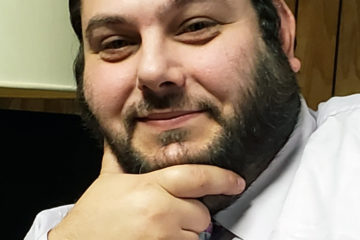Purim’s Torah

By Rabbi Leibel Agar, Beth Jacob Congregation
As we enter the month of March, our thoughts begin to turn to Purim. Even though the Jewish leap year’s extra month of Adar pushes Purim into mid-March this year, schools and synagogues all over the Jewish world are making plans for Purim activities. In our homes, costumes are being purchased and themes for shalach manos (Purim gift baskets of food and drink) are being dreamed up. Despite the need to incorporate extra safety measures into our celebrations, we are avidly awaiting a joyous Purim holiday.
When it comes to “shtick” on Purim, Purim Torah is one of my favorite aspects of the holiday.
As someone who is known for having an extensive store of weak puns and dad jokes, Purim Torah riddles like “Where does it talk about baseball in the Torah? In the Big Inning (beginning),” “Why couldn’t Noah play cards while he was on the Ark? Everyone was standing on the deck,” and “Why didn’t Cain lift big rocks? Because he was not Abel!” are an integral part of how I celebrate the holiday.
However, it is not Purim Torah that I wish to speak of here; rather, it is the Torah of Purim.
While Purim is a holiday of fun and celebration, it is also chock full of valuable Torah insights.
Specifically, I would like to share with you an aspect of Purim which I believe speaks to the very heart of our people: the need for community.
In the original Purim story, the Megillah describes how Haman decided to kill off all the Jewish people because one Jew (Mordechai) would not bow down to him. When Mordechai entreats Queen Esther to intervene, she tells him to declare a fast for all the Jews in Shushan. After our victory, all the Jews celebrated Haman’s downfall.
At its core, the story of Purim is about how we came together as a community in a time of trouble and how we overcame great odds together.
I believe this often-overlooked aspect of the Megillah speaks directly to today’s Jewish world.
We have seen great difficulties over the past couple of years. The Covid pandemic, unrest in Israel, a dramatic rise in antisemitism in America and all over the world…all of these things can bring us together as a community and as a people.
Now is not the time to fight amongst ourselves. Like our ancestors in Ahashverus’ kingdom, we need to unite and realize that we are all in this together.
As I look around at the Dayton Jewish community, I am heartened by what I see. We are not merely Jews who live in the same community; we are a community of Jews. We are there for one another, celebrating the good times and supporting one another in times of difficulty.
As it happens, I recently saw an example of this communal bond which the Jews in Dayton share. There was a member of our shul who lost a parent. During the days of shiva, we reached out to the community in order to get a minyan.
Not only did members of our shul answer the call, but Jews from all over the Dayton community responded.
Thanks to people from all over the community —members of Beth Jacob, Beth Abraham, Temple Beth Or, and Temple Israel — we were able to make minyanim each night of the shiva. It is this sense of community that will see us through the difficulties which we have been facing.
As our community continues its wonderful traditions of unity, support and brotherhood, may our Father in Heaven bring us all manner of blessing and success in all which we do!
To read the complete March 2022 Dayton Jewish Observer, click here.


